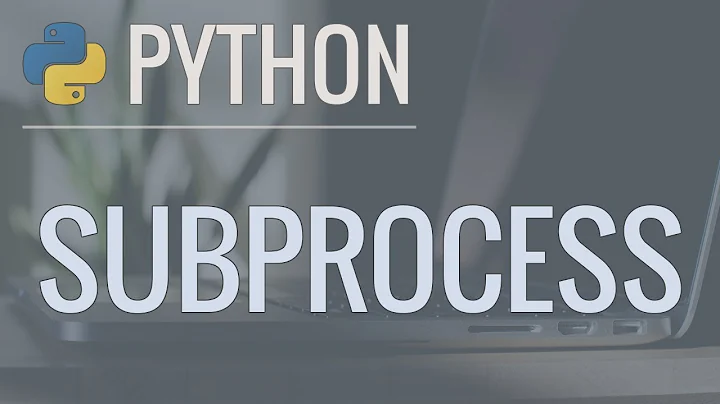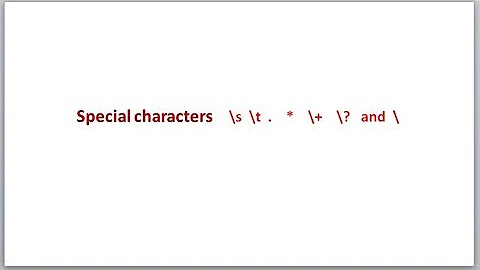How do I call a sed command in a python script?
Solution 1
You should avoid subprocess and implement the functionality of sed with Python instead, e.g. with the fileinput module:
#! /usr/bin/python
import fileinput
for line in fileinput.input("www.txt", inplace=True):
# inside this loop the STDOUT will be redirected to the file
# the comma after each print statement is needed to avoid double line breaks
print line.replace("hello", "helloworld"),
Solution 2
With subprocess.call, either every argument to the command should be a separate item in the list (and shell should not be set to True):
subprocess.call(["sed", "-i", "-e", 's/hello/helloworld/g', "www.txt"])
Or, the entire command should one string, with shell=True:
subprocess.call(["sed -i -e 's/hello/helloworld/g' www.txt"], shell=True)
The arguments are treated similarly for subprocess.call and Popen, and as the documentation for subprocess.Popen says:
On Unix with
shell=True, the shell defaults to/bin/sh. … Ifargsis a sequence, the first item specifies the command string, and any additional items will be treated as additional arguments to the shell itself. That is to say,Popendoes the equivalent of:Popen(['/bin/sh', '-c', args[0], args[1], ...])
Related videos on Youtube
Adam
Updated on September 18, 2022Comments
-
Adam over 1 year
Through python script, I am trying to replace a string by a string in a file using
sedcommand. I do that throughsubprocess.callas it in the script.When I run the command in the shell script or command, it runs fine, but in python I get a result saying "No input file". Any idea how to fix that error?
#!/usr/bin/python import subprocess subprocess.call(["sed -i -e 's/hello/helloworld/g'","www.txt"], shell=True)Output
No input file-
 muru about 8 yearsNext time, ask generic programming questions on Stack Overflow.
muru about 8 yearsNext time, ask generic programming questions on Stack Overflow. -
 Jacob Vlijm about 8 yearsWhy use sed anyway in a python script? python has built-in tools.
Jacob Vlijm about 8 yearsWhy use sed anyway in a python script? python has built-in tools.
-
-
Adam about 8 yearsI like this solution, but it messes up the file, it gives spaces between the lines everytime i do replace !. any idea how to fix that ?
-
 Byte Commander about 8 yearsIt shouldn't do that unless you omitted the comma in the end of the print statement. Do you have that in the script? Check it again.
Byte Commander about 8 yearsIt shouldn't do that unless you omitted the comma in the end of the print statement. Do you have that in the script? Check it again. -
 Maximilian almost 7 yearsWon't this be significantly slower than using
Maximilian almost 7 yearsWon't this be significantly slower than usingsed? -
 Paula Livingstone over 6 yearsHi I have been trying this but its obviously been written for Python 2.X however when I put parentheses around the arguments to the print command on the last line it seems to work but inserts a blank line between every line of the file to be edited. How would this be modified to cope with Python 3.
Paula Livingstone over 6 yearsHi I have been trying this but its obviously been written for Python 2.X however when I put parentheses around the arguments to the print command on the last line it seems to work but inserts a blank line between every line of the file to be edited. How would this be modified to cope with Python 3. -
 Byte Commander over 6 years@PaulaLivingstone
Byte Commander over 6 years@PaulaLivingstoneprint(line.replace("hello", "helloworld"), end="")should do it. The trailing comma at the end of the Python 2 print statement suppressed the line break, which is what the keyword parameterend=""does in Python 3. -
 Paula Livingstone over 6 yearsAah great that works. I was just in the process of munging some text locally to see if I could make it work for Python3 but you've saved me the trouble. Thanks :) +1 from me..
Paula Livingstone over 6 yearsAah great that works. I was just in the process of munging some text locally to see if I could make it work for Python3 but you've saved me the trouble. Thanks :) +1 from me.. -
 kRazzy R over 4 yearshow do you do the same if you wanted to pass variables instead of values to the sed?
kRazzy R over 4 yearshow do you do the same if you wanted to pass variables instead of values to the sed?





